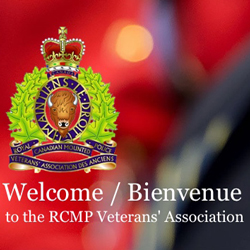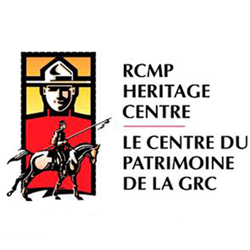Vancouver And Mountie Moments!

Veteran Ric Hall sent us the following details.
Most members who have served in “E” Division are aware of the history of Fairmont Barracks. Fairmount Academy was originally an elite private school for boys and was built in Tudor Revival style. During World War I, the Fairmount Academy fell on hard times. In 1918, it was taken over by the federal government and turned into a military hospital. In 1920, the building became the Fairmount Barracks of the RCMP. Over the years, with the growth of the RCMP, the Fairmount Building housed Vancouver Sub-Division, “E” Division Training until “E” Division HQs moved to Surrey. There is a historic connection, both on parade and on patrol, between the RCMP and the City of Vancouver.

Fairmont Barracks – 1920 – located in an undeveloped area of Vancouver.

Fairmont viewed from Little Mountain, aka, Queen Elizabeth Park.
Note the stables o46157 – Tia Ann Sullivanff to the left.

The C.O. requests the pleasure of your company for a team
photo – No Overtime! – July, 1921.
There were always members and horses available at Fairmont Barracks and they always made a nice addition to parades in Vancouver.

Mounted troop in front St Paul’s Hospital – 1919
Below, the Hudson’s Bay Company store still under construction around 1925 is in the background. Interesting to note the flag hanging from the building, it is very similar to what became the Canadian flag in 1965. Note the horses have white shabracks. For more on white shabracks, check out details here.

Another parade and another troop of mounted members riding past the now
Completed Hudson’s Bay Company store.

Another parade and another troop of mounted members riding past the now Completed Hudson’s Bay Company store.

1936 – Pacific National Exhibition parade
Parades appeared to be quite the social event in the 1920/30s. The ladies are all dressed up and the gents have their fedoras and suits or sports jackets on.

Two photographs of members marching along Hastings Street, with the old Woodward’s Department Store in the background. Photos are undated, but possibly they are marching in the PNE Parade.


Another parade along Hastings Street with the Marine Building in the background

The above photograph has been used many times in articles on the history of Fairmont Barracks. The time frame in which it was taken has always been a bit of a mystery. Recently I came across the photograph below which clearly shows the NCO on the right in the photo above leading a group of mounted members. From the dress of the ladies and the headwear of the men in the crowd, it would once again appear to be from the 1930s era.

It was not all parades, lollipops and roses for the Mounties. From time to time they were called upon to deal with some labour issues.
1935 – The Battle of Ballantyne Pier
JOHN MACKIE, VANCOUVER SUN 06.19.2015
Vancouver — On June 18, 1935, 1,000 striking waterfront workers and their supporters tried to march to Ballantyne Pier, where strike breakers were unloading ships.
At the foot of Heatley Avenue, they were met by the RCMP, who fired tear gas into the crowd. A mounted squad then rode in, riding crops swinging.
The Battle of Ballantyne Pier was on.

A pitched battle raged for half an hour, with the RCMP clubbing the protesters, and the protesters showering the police with rocks.
“Scores were injured,” Pat Terry reported in The Vancouver Sun. “Hundreds suffered the effects of ‘weeping gas’ from police bombs. Police were injured by rocks, iron bolts and lead bars thrown by the crowd.”
The march had been announced two nights before at a rally at the Denman Arena by Ivan Emery, the leader of the Longshoremen and Water Transport Workers of Canada.
Emery delivered an incendiary speech, stating that the longshoremen would not be intimidated by police.
“Many of us were overseas (fighting in the First World War) and faced the best guns a whole nation could put against us,” Emery stated. “We have heard the rattle of machine-guns. I believe we have enough ex-servicemen on the waterfront who are prepared to listen to them again.”
Emery was arrested shortly before the march, but it went ahead without him. An estimated 4,000 people came out to watch as the marchers came up Powell Street around 1 p.m., singing First World War songs. At the front of the march was a well-known local Victoria Cross winner, Mickey O’Rourke; another veteran carried the Union Jack.
At the railway tracks, Vancouver’s Chief of Police, Col. W.W. Foster, held his hand up and tried to talk to the marchers. They halted, just as a plainclothes RCMP officer shot off a tear-gas canister.
Sun reporter Bob Couchette found himself in the middle of the melee.
“From behind the box-cars charge a squad of provincials on horseback,” Bouchette wrote. “Screams and shouts and curses. Rocks are flying from behind me. Everybody begins running. The sight of galloping horsemen is truly terrifying.
“A (tear gas) bomb hits the platform of the Heatley Avenue railway station and bursts. Our eyes stream with tears.
“The police are laying to left and right with their batons. And quite suddenly the tracks are clear.
“But the battle has fanned out. It is proceeding in a hundred places in streets and lanes. You cannot get a picture of the whole — just flashes.
“The horsed policemen are thundering up Heatley Avenue. You must watch your head. You stand an even chance of being hit by a rock or a swishing riding crop.”
Sun photographer Syd Williamson captured the scene with a series of blurry photos. They were blurry because Williamson was tear-gassed.
“Through a stream of tears, he tried to focus his camera on little bits of action here and there after getting an eyeful of the first bomb,” The Sun reported.
The marchers retreated into the backyards and houses of Japantown, with the RCMP and city police in pursuit. Williamson took an incredible shot of mounted police charging into a group of marchers who had taken shelter on a veranda on Heatley Street.
Anybody on the streets was a target.
“In a vegetable store nearby an elderly woman is waiting for an ambulance,” Bouchette reported. “She has suffered a nasty blow on the back of the head. She says ‘I was trying to get some eggs and a mounted policeman told me to get off the sidewalk. I told him I was a taxpayer and he hit me with his crop.’”
One hundred civilians and 44 police were treated for injuries following the battle, which is also known as the Powell Street Riot. Sixteen people were arrested the day of the march, including Emery, who was charged with inciting a riot. He received three months in jail.
The worst police injury was to VPD Constable Len Cuthbert, who was dragged out of his car at Heatley and Powell.
“A mob gathered and he was pounded on the head by a large rock,” The Sun reported. “His face was ground in the dirt, alongside a fence. Another civilian grabbed a single-bitted axe and started to smash the car.”
Cuthbert would achieve infamy 20 years later as one of the key figures in the Mulligan inquiry, which exposed corruption at the highest level of the Vancouver police.

It was just a short gallop from Fairmont Barracks to downtown Vancouver


In early 1938, the Prime Minister cut grants-in-aid to the provinces, effectively killing the relief project scheme. Premier Thomas Dufferin Pattullo closed the projects in April, claiming that British Columbia could not shoulder the burden alone. Unemployed men again flocked to Vancouver to protest government insensitivity and intransigence to their plight.
Communist organizers had a wealth of experience in sidestepping police spies. On the afternoon of 20 May 1938, approximately 1200 men left from four different halls in the East End of Vancouver, most of them believing they were headed to Stanley Park for a protest rally. Only when one group arrived at the corner of Granville and Hastings streets did it become evident that their destination was the post office. Over 700 men flooded into the recently renovated building. Police reinforcements were called from Granville and Georgia Streets, leaving the way clear for a second column of 200 to enter Hotel Georgia, while a third group of 300 entered the art gallery.
Zero hour arrived at five o’clock on the morning of June, 19, 1938, presumably timed to surprise the strikers and to minimize the number of onlookers.
The post office was a different situation. Because it was a federal building, the RCMP led the assault. The men responded to the first round of tear gas by smashing the windows for ventilation and arming themselves with whatever projectiles they could find. The RCMP entered the building and forcibly ejected the men, who were subjected to a cordon of police armed with batons upon leaving the building. City police outside assisted the Mounties. Of the 42 hospitalized, only five were police and all of those were Vancouver police constables.

RCMP members remove protesters from the Vancouver Post Office into the waiting arms of the Vancouver Police.
St. Roch National Historic Site of Canada: St. Roch was constructed in 1928 at the Burrard Dry Dock Shipyards in North Vancouver.
St. Roch was designated a national historic site of Canada because:
– she became the first ship to cross from the Pacific to the Atlantic by the North West Passage;
– she was also the first ship to complete the hazardous journey in both directions.
The Canadian-built St. Roch is valued as an excellent example of Canada’s maritime history. She navigated the Northwest Passage, arriving in Halifax in 1942, after spending two winters frozen in the ice. She was the second ship to make the Passage, and the first to conquer the journey from the Pacific to the Atlantic. In 1944, the refitted St. Roch returned to Vancouver via the more northerly, deep route of the Prince of Wales Strait in eighty-six ice-free days – the first to navigate the Northwest Passage in a single season. Retired in 1948, St. Roch was sent to Halifax via the Panama Canal in 1950, making her the first ship to circumnavigate North America.
Under the command and leadership of Sergeant Henry Larsen (1899-1964) who was first mate and captain for twenty years, the voyages of the St. Roch demonstrated Canadian sovereignty in the Arctic. She extended and maintained Canadian control over its vast northern territories as an all-purpose supply, patrol and transport vessel and governmental representative to service isolated and relatively inaccessible R.C.M.P. detachments by settling disputes and conducting a census of the Inuit. During this time the St. Roch was the only federal presence in the far north. During the Second World War the St. Roch was sent through the North West Passage to protect war industries in the north, specifically a mine in Greenland which was the sole source of cyrolite essential to the production of aluminum.
The heritage value lies in the original design and the multiple refits that were designed to deal harsh conditions and reflect the changing technologies in marine transportation over the course of her working life. The St. Roch has been restored to her appearance during her epic journeys between 1940-1944 that was a mix of original elements and subsequent refits. Additional value in her material fabric include the spare and well-considered details of her design in terms of the efficiency and economy of her living and working quarters.
In 1954, the St. Roch was decommissioned in Halifax and returned to Vancouver. In 1958, she was placed in drydock at Kitsilano Point for restoration, partly inspiring the location of the planned Vancouver Maritime Museum, which opened the following year. In 1962, St. Roch was designated a National Historic Site of Canada. Although the ship was placed indoors in an A-frame building adjoining the museum, it remained formally under the control of Parks Canada. In 1995 Parks Canada handed over full control of the St. Roch to the museum. The St Roch forms the focal point of the Vancouver Maritime Museum.


The St Roch is retired and awaiting a new home in the Vancouver Maritime Museum

What happens when the home town team loses the Stanly Cup in Game 7 in 1994 and 2011?
The RCMP LMD Integrated Tactical Troop is called in to assist the VPD.


When smoke gets in your eyes!


“Time for you to go home, young fellow!”

A postcard moment – RCMP and Vancouver Police members have a photo-op at Stanley Park in the mid-1960s. Today there would be a gazillion tourists surrounding them!



 October 28, 2017
October 28, 2017 







